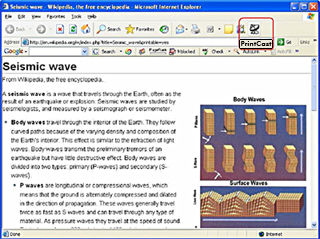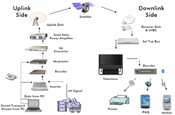HP Labs India
Research - Simplifying Web Access and Interaction project| TVPrintCast |
Broadcast media, such as television and radio, are more pervasive than internet especially in the developing countries like India. Distributing internet content over broadcast media is an important application because of broadcast media's comprehensive population coverage. HP Labs India has developed an architecture to distribute internet content along with the audio visual stream over a broadcast medium.
The receiving end in the architecture could be either a TV set or a PC. The existing broadcast network is used to broadcast data that can be received, stored, retrieved or printed depending on the need or the availability of resources. A broadcaster can insert internet content dynamically into an audio visual stream and distribute it anytime during the course of broadcasting. The interface has been designed in a way such that internet content insertion and distribution can be done by just clicking a button on the IE toolbar.
This technology has the ability to augment the TV viewing experience with a print artifact without disrupting it. In order to experience TVPrintCast the broadcaster has to have content specifically designed and created for broadcast. The viewer will require a printer attached to the TV set through a TVPrintCast interface – a Print ready Set Top Box.
Television is often attributed with the facility to grab attention, while print is often associated with being more persistent. We believe that the ability to provide audio-visual along with Print in a synchronous manner will not only make it possible for these media to complement each other but will also greatly impact the use of these broadcast media such as distance education. This ability to synchronously deliver audio visual and print will not only impact the effectiveness and the reach of these distance education programs, but will also impact how content is created and developed for this new medium.
The technology is not restricted to sending print artifacts. With this technology the broadcaster can also send non-print artifacts like a ringtone or a video clip that can be downloaded at the viewers end onto a BlueTooth enabled hand held device like a mobile phone.
TVPrintCast technology has received UN recognition for mass communication.

To know more about TVPrintCast, click
here to download the whitepaper
